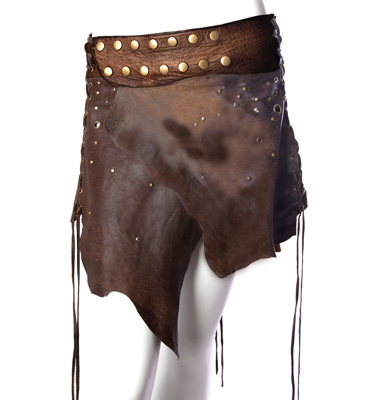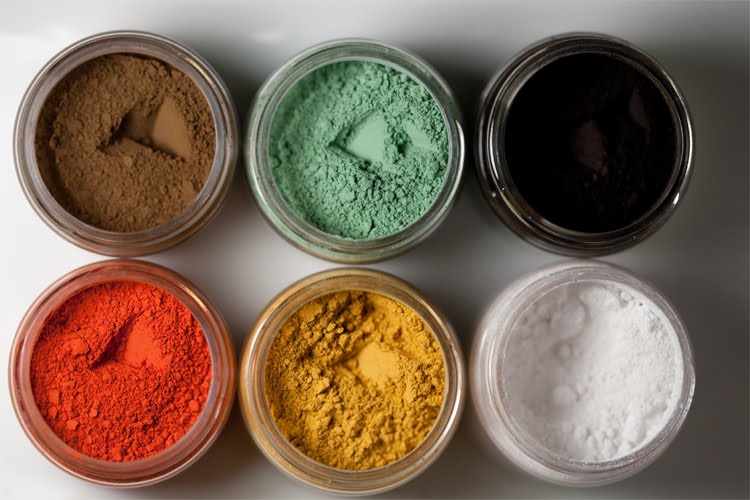Navarr costumes
| Line 45: | Line 45: | ||
*[http://www.doityourself.com/stry/learn-how-to-sew-sewing-fur#b Do it Yourself] | *[http://www.doityourself.com/stry/learn-how-to-sew-sewing-fur#b Do it Yourself] | ||
The garments will be simple, and can be based around t-tunics, with a fabric tunic as a base layer and a leather tunic with or without sleeves on top. Light, soft garment suede can generally be | The garments will be simple, and can be based around t-tunics, with a fabric tunic as a base layer and a leather tunic with or without sleeves on top. Light, soft garment suede can generally be sewn on a regular sewing machine providing a stronger (leather specific) needle is used. These are generally available from most sewing and hobby retailers. In this way many of the instructions for making simple fabric items can be duplicated with lightweight leather, though remember leather does not fray like fabric so edges can be left 'as cut' so check any allowances on patterns for hems and seams. The easiest way to machine sew light leather is to apply a thin line of general purpose glue along the intended stitch line of each piece, this holds them securely in place whilst running each section through your machine. It is recommended to test a small sample with your machine first. | ||
Depending on the size of the hide used, for a rougher, more natural edge to a shirt or tunic the leather can be left uncut along the | Depending on the size of the hide used, for a rougher, more natural edge to a shirt or tunic the leather can be left uncut along the base or round the cuffs. | ||
{{CaptionedImage|file=SoftLeatherShirt.jpg|width=250px}} | {{CaptionedImage|file=SoftLeatherShirt.jpg|width=250px}} | ||
Revision as of 12:24, 2 September 2012
Note: The tone and style of this page may need editing. All costume advice pages should be written in third person voice, using verbs that make clear that this page is advice, not direction.
Overview
The Navarr are a practical people and their clothes reflect this. They prefer hard wearing clothes that will survive heavy use in the woods, and colours that withstand the mud and rain. Patched and mended fabrics will be seen in many clothes, as worn and ripped clothes are mended 'on the go'. Layered clothes are common, so that outfits be easily changed no matter the weather. Large cloaks that can be used as blankets are common. Belts are also used by most Navarri, both for keeping their clothes pulled back away from branches and brambles, and for carrying their kit.
Materials
Materials are practical, primarily those that come from hunting - leather, suede and fur. Materials like linen, wool, velvet or silk are less common.
When it comes to decoration, natural materials are drawn from heavily. Feathers and fur may trim clothes, and beads made from seeds, wood and stones will adorn many of their garments. Patterns may also be painted onto clothes, again using natural colours like ochre red, black and white.
Colours
The palette is the colours of a spring: soft greens and browns, gentle misty greys, and perhaps the dark blood red of birthing or dark autumnal yellow.
Inspiration
Wild/wood elves, The Rangers from Lord of the Rings.
Similar nations
Wintermark
Navarr tend to wear light leather armour and simple, earth tone clothes, much like the Steinr. Navarr decorations are more likely to come from nature, in the form of paints, feathers and beads, rather than the woven trims popular with the Steinr.
Kallavesi mystics may also be occasionally mistaken for Navarr Vates; however, the Navarr do not wear animal headresses and do not believe in evoking animal spirits.
The Marches
There are also overlaps between the Marches Beaters and the Navarr. The Beaters tend towards later medieval period clothing, like jacks rather than the tunics and vests popular with the Navarr. The Navarr also tend to use large amounts of furs, pieces of leather and paints that the Marchers would avoid.
Costumes
Navarr clothing is layered, serviceable and well-worn. Even for civilians, it’ll often features pieces of leather armour, though this is to protect against the environment as much as enemy weapons. Clothes are suitable for people who live their lives in the wild forests. Not just a robust construction but practical designs, for instance hooded cloaks that give protection against the weather, but can also serve as bedding. Belts and straps feature quite heavily – both to secure clothing so it doesn’t snag, and to hold a variety of gear securely while moving through woodland. Boots are long and close fitting to protect the lower legs while walking.
Navarr style of dress varies, depending on how much contact the Striding or Steading has with the other nations. More isolated Navarr may adopt a rougher, more practical or primitive look, primarily comprised of leather, furs and natural materials, suitable for hunting people who are used to sleeping rough. Those Navarr who trade with their neighbours are more likely to have access to wool and similar materials so their costume reflects their closer contact with fellow members of the Empire. However, most Navarr will fall somewhere in between these two extremes.
For formal functions, some Navarr will prefer to draw from their roots, wearing highly decorated leathers and impressive furs, and donning their most intricate facepaints. More integrated Navarr will prefer to reflect what is fashionable in other nations, in wool, linen and silk clothes. These will usually be given a Navarri slant though, with fur trims, decoration in natural materials and a natural colour pallete.
Shoes
Shoes can take many forms, as long as they are practical. For this reason, leather boots are most common, often coming to or even past the knee. Ankle boots in soft suede and canvas would also be perfectly suitable, however, as would the addition of boot tops, puttees and wraps in cloth and leather.
Navarr costumes, being mostly leather and fur, require some care and specialist knowledge to create at home. For those people who are unfamiliar with leather work, there are plenty of resources available on the internet.
The garments will be simple, and can be based around t-tunics, with a fabric tunic as a base layer and a leather tunic with or without sleeves on top. Light, soft garment suede can generally be sewn on a regular sewing machine providing a stronger (leather specific) needle is used. These are generally available from most sewing and hobby retailers. In this way many of the instructions for making simple fabric items can be duplicated with lightweight leather, though remember leather does not fray like fabric so edges can be left 'as cut' so check any allowances on patterns for hems and seams. The easiest way to machine sew light leather is to apply a thin line of general purpose glue along the intended stitch line of each piece, this holds them securely in place whilst running each section through your machine. It is recommended to test a small sample with your machine first. Depending on the size of the hide used, for a rougher, more natural edge to a shirt or tunic the leather can be left uncut along the base or round the cuffs.
Leather or suede trousers are a staple of Navarr costumes and if care is taken to hide or remove modern belt loops, pockets and zips, leather 'jeans' will be perfectly suitable. Trousers in suede, and brown or green would be preferable to shiny black leather if possible. Leather and fur coats can also be adapted by removing collars, sleeves and buttons to make a robe or waistcoat style coat. Skirts and loin cloths can be made by lacing or sewing a piece (or lots of small pieces) of leather, suede or fur to a belt which can then be buckled around the waist. Similarly old or damaged parts of existing soft leather costumes can be used to good effect by cutting away excess for a skirt or loin cloths, combining different items in a patchwork of repair to make a single servicable item or simply shredding them to provide cosmetic effect of repaired patches to existing kit.
Decorations will take the form of natural objects like feathers,gemstones, bones, and beads made from wood, stones, clay and shells, which are all readily available through craft shops and online. Leather lacing and decorative stitching using leather thonging can be used in place of embroidery. Acrylic paint is excellent for decorating fabric and leather and is cheap and easy to use. Colours should reflect natural pigments where possible. As the Navarr are not based on Native Americans, large quantities of turquoise beading, and leather tassels are best avoided. Similarly, Celtic style knot-work isn't suitable as decorative patterns.
Overall, costumes for the Navarr should appear well used, comfortable and practical. Pieces of old costume can be gathered from friends and past characters, or found second hand in charity or vintage shops for a worn and pieced together look.
Children's costumes
Navarr children will wear simplified versions of adult clothing - garments that are practical for play but also easy to keep clean. For toddlers and babies, smocks, or simple t-tunics and drawstring trousers are simple and easy to pull-on garments, that can be made in linen or cotton for easy washing! These types of clothes also have plenty of flexibility in terms of size, meaning you'll get more than one year's use out of them. Small coifs, made as described above are great for keeping the sun off a baby's head and simple straw hats can also be used to stop children burning. Older children can either have their own costumes, or be given adult clothes which are then rolled up and belted to fit - the practical Navarr are unlikely to waste any clothing and hand me downs are a cheap (in and out of character!) way to clothe your children!
When making costumes for smaller children, remember to avoid anything tight around the neck - strings, cloaks, hats on cords etc and in addition, all tabards should secure under the arms. Make sleeves and armholes wider than needed; they're the bits that get tight as they grow. Neck holes also need to be bigger than for adults or should fasten at the back.
Armour
Thick hardened leather is the most common form of armour for the Navarr, occasionally supplemented with light chain or scale. Navarr armour often features an asymmetric pattern, with lines and closures that run diagonally across the body rather than vertically. Leather is the most common material used for armour by the Navarr, but they occasionally augment the armour with sections of chain or scale. A popular style is asymmetric with diagonal lines that overlap over the body, but a single breastplate is just as common.
Shields Shields are narrow and fluted, barely wider than the wielder. They are often heavily decorated with the thorn motif. Weapons The iconic weapon of the Navarr is a great barbed spear. Otherwise weapons are, light, practical and good for skirmishing rather than heavy combat. Bows are often short, for ease of use in woodland.
Bibliography and resources
Armour
- Totally Leathered Totally Leathered provides custom tooled leatherwork & bespoke armour.
- Idiom Productions Costume and Props Workshop creates custom hand-tooled leather armour, clothing and LRP weapons



